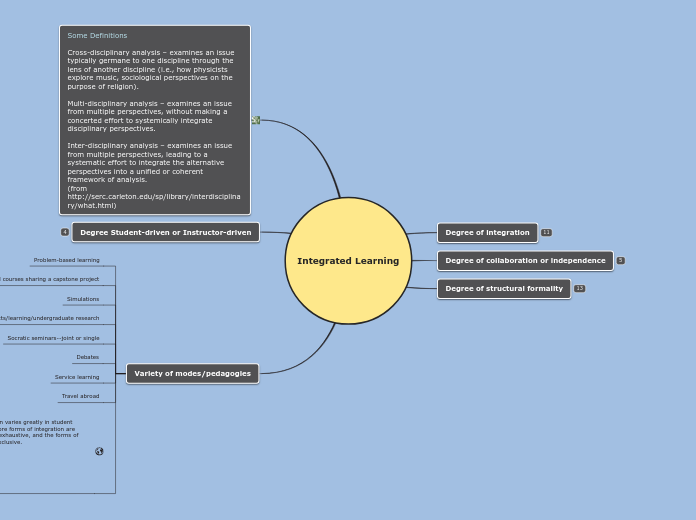Integrated Learning
Degree of integration
Degree of collaboration or independence
Degree of structural formality
Some Definitions
Cross-disciplinary analysis – examines an issue typically germane to one discipline through the lens of another discipline (i.e., how physicists explore music, sociological perspectives on the purpose of religion).
Multi-disciplinary analysis – examines an issue from multiple perspectives, without making a concerted effort to systemically integrate disciplinary perspectives.
Inter-disciplinary analysis – examines an issue from multiple perspectives, leading to a systematic effort to integrate the alternative perspectives into a unified or coherent framework of analysis.
(from http://serc.carleton.edu/sp/library/interdisciplinary/what.html)
Degree Student-driven or Instructor-driven
Variety of modes/pedagogies
Problem-based learning
two or more traditional courses sharing a capstone project
Simulations
inquiry-based projects/learning/undergraduate research
Socratic seminars--joint or single
Debates
Service learning
Travel abroad
Snapshots of integration
Because disciplinary integration varies greatly in student interdisciplinary work, a few core forms of integration are outlined below. The list is not exhaustive, and the forms of integration are not mutually exclusive.
(a) Aesthetic synthesis
(b) Crossover tool
(c) Resonance
(d) Complex explanation
(e) Pragmatic solution
(f) Embedding
(g) Embodying.
